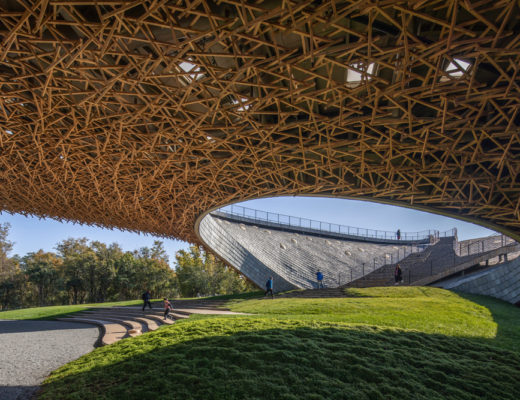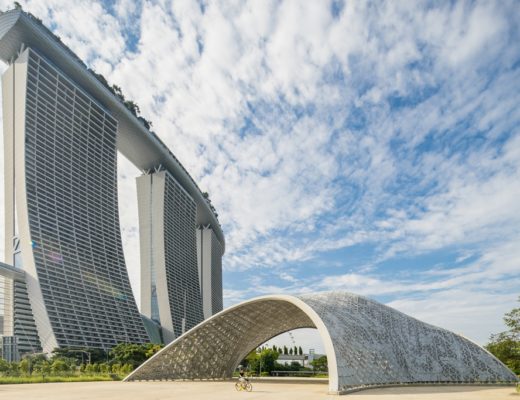At a recently held event in Las Vegas for the AEC industry, Singapore-based firm Digital Blue Foam launched a web-based, centralised, user-friendly platform that is accessible to and usable by designers and non-designers. It will integrate all sustainability considerations under one roof and allow for cross-platform integration.
We spoke to the company’s founders, Canadian architect Sayjel Vijay Patel, software designer, and founding assistant professor at the Dubai Institute of Design and Innovation with a Master of Architecture from the MIT School of Architecture and Planning; and Dutch architect and designer Camiel Weijenberg, and an alumnus of London’s prestigious Architectural Association, about how the product that aims to transform the AEC industry came about as well as the evolution of tech-aided architecture.
How did the idea germinate for Digital Blue Foam? How many iterations did you go through before launching the final product?
Sayjel Patel (SP): The idea for Digital Blue Foam came from a desire to confront the challenges of rapid development due to climate change and mass human migration to cities.
When I was a student at MIT, I witnessed first-hand, massive development projects taking place in the Chinese city of Chongqing. In this city, it was said that 300 high-rise buildings were being constructed each month. The speed of development in contrast to the overwhelming amount of energy, resources, and labour being invested in these projects was shocking. It was further compounded by the suggestion that these projects were designed to be replaced in only 20 years.
A year later, I received a fellowship to teach and do research at the Singapore University of Technology and Design (SUTD). I was looking to further develop my thesis research, which explores the use of new 3D game technologies to develop the next generation of conceptual design software. At this time, I met Camiel, who is an architect with a design studio in Singapore. Camiel is very passionate about sustainable architecture. He had been working with SUTD on a research project to develop the first timber skyscraper in Southeast Asia. A major part of this work was to look at how new digital workflows can be used to help demonstrate the viability of such a project.
We found common ground instantly, drawing from both of our experiences. After many conversations, we developed the first mock-up of Digital Blue Foam. After two years of developing our codebase and business model, we launched our company in Las Vegas in June 2019.
Which gap does it fill in the market that is inundated with many BIM and technology-aided design tools?
Camiel Weijenberg (CW): We have focused on developing a tool that even a non-designer can use to be briefed about a project without any training. This allows the architect to offer visual options and discuss trade-offs between various decisions in terms of economic viability, sustainable performance, and other considerations.
SP: As someone who works as both an architectural designer and software developer, it is clear to me that most of the software is poorly designed. In many cases, these tools were based on emerging technologies from 20-30 years ago, and do not take into account many advances which have transformed the IT industry. For instance, when trying to find a function in AutoCAD or global information system (GIS) software, a user must choose from hundreds of unique settings and options. You practically have to have a degree in software engineering rather than design to open the software! It is no wonder, that many articles have been published in recent years, pointing to our industry as one the least digitised and most primed for disruption.
With this in mind, we are always testing and learning from other fields such as games, social media, and 3D printing to learn how we can improve our user-experience. We constantly question how we can make them more productive by automating many tedious tasks. Our ultimate goal is to help designers spend more time on design rather than crunching numbers and also to help them communicate the benefits of their design to their clients.
What are some of the main sustainability-focused advantages of this product?
CW: We are focused on the early stages of the design process where the biggest impact can be made. Simple choices involving building orientation, proportion, and massing can have a big impact on the sustainability and energy-usage of a building. Using geo-located APIs, the tool gathers local information based on a GPS coordinate on precipitation, solar irradiation, wind, pollution, and other information which affect sustainability. The current version of the tool allows the users to estimate the benefits of strategies such as rainwater collection and photovoltaics. However, this is something we hope to expand in future versions.
How does it combine elements of architecture, engineering, and construction together in a cohesive manner? What kind of process flow do you envisage based on this tool that will make the job of an architect and structural engineer easier?
CW: We envision this tool will be used for the early stages of the design process. What we have learned from our practice, is that as a project evolves, there is less potential to improve the overall performance of a design. As architects, we found that we have a big challenge to brief our clients on the constraints for a selected site and also to educate the impacts of critical factors such as massing and facade on overall sustainability. Digital Blue Foam helps at this point, because you can sit in a meeting with your client and on a tablet begin to visualise and compute information to help make better decisions.
A big leap with Digital Blue Foam is to combine elements of the design process in a more seamless manner. Currently, design teams work back and forth between many different design tools and download project data from many different websites. As a project evolves and client requests change, this way of working can become time-consuming, and also lead to the possibility for human error.
With our software, we take the core elements of the design process – data collection, 3D modelling, and drawing production – and integrate it within a single tool. The tool syncs to BIM, allowing design teams to import an urban context, slabs, facade and other elements as native BIM elements. Teams will never have to open an empty file again!
With data analysis and parametric design becoming an integral part of the design process, there is just an overwhelming amount of data to be distilled and applied. How does Digital Blue Foam address this? Does it have advanced filters which can address specific requirements, for example, wind resistance in high-rises, material selection for site-specific use, and seismic performance review and such?
CW: With so many data-sets and potential solutions on the market, it can be overwhelming to know where to start. Thinking of an example such as Uber, the user knows two things: where they are, and where they want to go. Rather than follow or contribute to a saturated market of parametric modelling tools environments, we at Digital Blue Foam are inspired by the concept of Uber, whereby the user interface is as simple as possible. “Under the hood” we have developed an interactive AI system which understands the users goals based on simple inputs, and analyses data to generate new designs.
We are currently in Alpha testing Digital Blue Foam with enterprise clients who have requested advanced features which integrate with our software.
Is there a building response review feature post construction?
CW: Interesting question! As we gain more users, and more projects are completed with our platform, they can provide feedback towards our evolving data-set through social media and other captured data.
Which regions are you going to focus on to begin with?
CW: Our plan is to work globally. However, our first customers are based in Asia. We officially launched in June, and already we have received enquiries from around the world – from Australia to the United States, the Philippines, and the United Kingdom.
Lastly, if you were talking to an architect or a big engineering firm, what would be your elevator pitch?
CW and SP: Digital Blue Foam is a Singapore-based company that has created an eponymous software that hunts, gathers and computes contextual data such as climate, program and urban networks to determine the right building configuration using advances in artificial intelligence, generative design, and web-based 3D visualisation. It aims to accelerate the world’s transition to better, greener cities.




